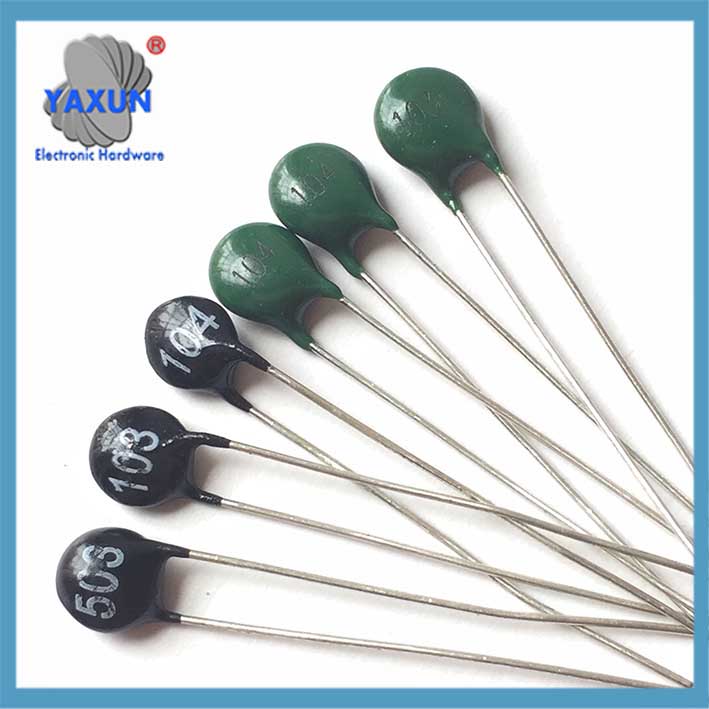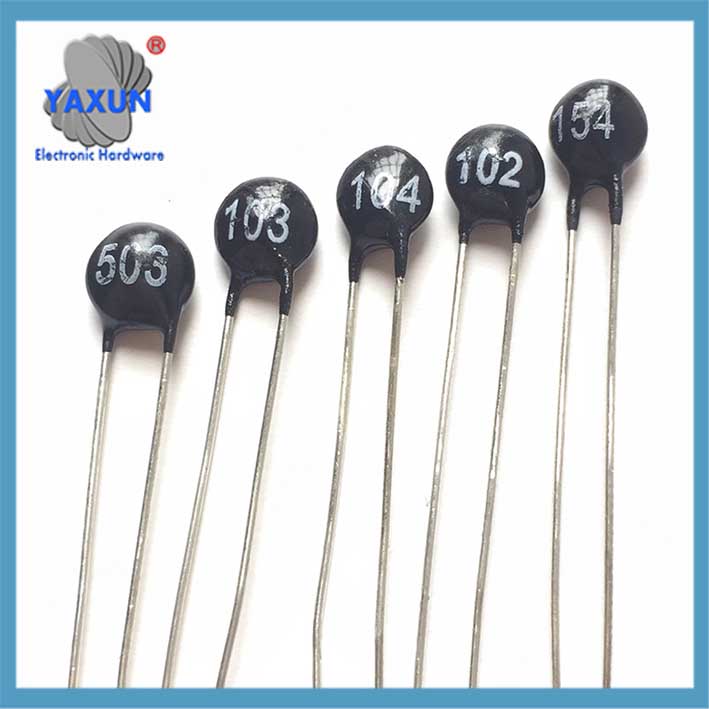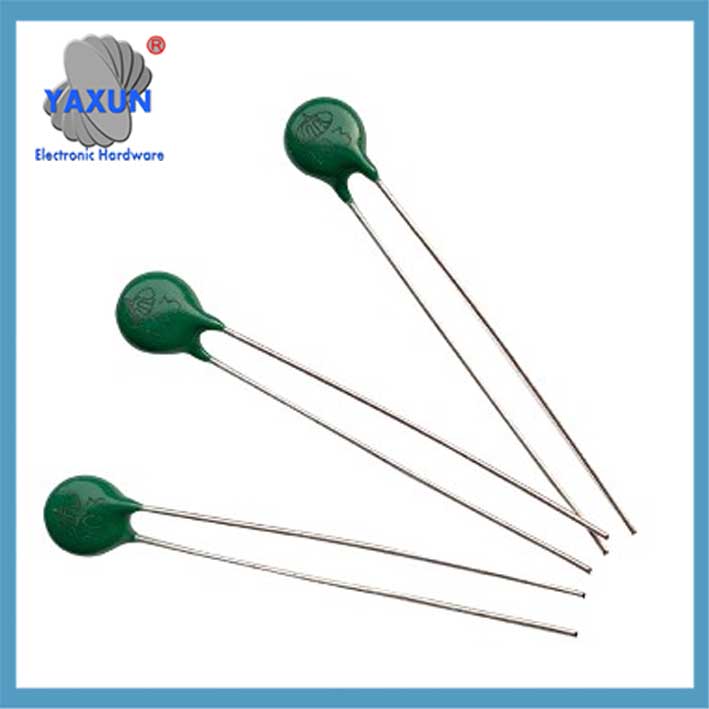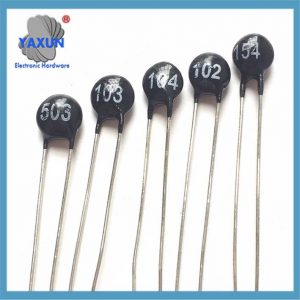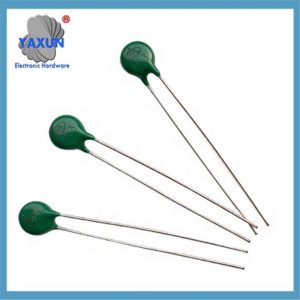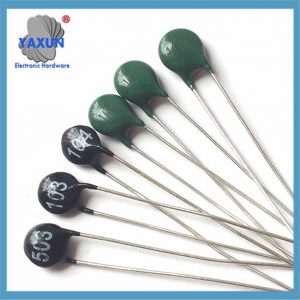제품 카테고리
- 온도 퓨즈 32
- 표면 마운트 퓨즈 12
- 서미스터 36
- PCB 마운트 퓨즈 홀더 27
- 배선 하니스 6
- 블레이드 퓨즈 홀더 17
- 온도 조절기 50
- 전기 퓨즈 24
- 자동차 온도 센서 7
- 열 회로 차단기 22
- 퓨즈 박스 홀더 36
- 온도 센서 75
- 열 스위치 68
- 자동차 퓨즈 20
- 퓨즈를 볼트로 낮추십시오 8
제품 태그
온도 보상 NTC 서미스터 MF11
서미스터를 사용한 온도 보상 MF11은 전자 회로 또는 시스템의 온도 변화에 대항하거나 수정하기 위해 온도와 함께 저항 변화를 사용하는 것과 관련이 있습니다.. 서미스터, 특히 음의 온도 계수 (NTC) 서미스터, 안정적인 작동을 유지하고 온도 관련 문제로부터 보호하기 위해 다양한 응용 프로그램에 사용됩니다..
음의 온도 계수 (NTC) 서미스터: NTC 서머 스터는 온도가 증가함에 따라 저항이 감소합니다., 그리고 그 반대도 마찬가지입니다. 이 특성은 온도에 민감한 구성 요소 또는 회로를 보상하는 데 이상적입니다..
온도 보상 서미스터 MF11. 주로 음수 온도 계수를 사용하여 구현됩니다 (NTC) 서머 스터. 다음은 핵심 원칙입니다, 응용 프로그램 및 특성:
나. 보상 원칙
음성 온도 계수 특성
NTC 서머 스터의 저항 값은 온도 증가에 따라 크게 감소합니다., 그리고 그것의 저항-온도 관계는 공식을 준수합니다:
아르 자형(티)= R0⋅EB⋅(1T -1T0)아르 자형(티)= r0 ⋅B거나(T1 -T0 1) (R0R0은 기준 온도 T0T0의 저항 값입니다., 그리고 BB는 재료 상수입니다).
이 특성을 사용합니다, 양의 온도 계수 구성 요소의 성능 드리프트 (트랜지스터 및 크리스탈 발진기와 같은) 온도 증가로 인해 발생하면 상쇄 될 수 있습니다.
compensation 회로 설계
compedined 전류 보상 : NTC 서머 스터를 일정한 전류 소스와 결합하여, 온도 의존적 보상 전류가 생성되어 민감한 회로 노드에 주입됩니다. (위상 잠금 루프의 충전 펌프와 같은) 주요 매개 변수를 안정화합니다.
bridge 또는 전압 분배기 회로 : NTC는 센서 회로에 내장되어 전압 분배기 비율을 조정하여 온도로 인한 제로 포인트 드리프트를 상쇄합니다..
적극적인 보상:
서미스터는 활성 보상 회로에 사용할 수 있습니다, 온도 변화를 감지하고 시정 조치를 유발하는 센서 역할을하는 곳. 여기에는 회로의 매개 변수를 조정하거나 원하는 성능을 유지하기 위해 장치의 출력을 제어하는 것이 포함될 수 있습니다..
수동적 보상:
서미스터는 수동 보상 회로에도 사용할 수 있습니다, 저항 변경이 사용되는 경우 회로의 온도 변화의 영향을 상쇄하거나 취소하는 데. 이것은 종종 서머 스터를 직렬로 배치하거나 다른 회로 구성 요소와 평행으로 이루어집니다..
II. 온도 보상에서 서미스터 응용의 예:
전자 회로 안정성 보상
회로 작동 안정성을 유지하기 위해 트랜지스터 및 크리스탈 발진기와 같은 구성 요소의 온도 드리프트를 보상합니다..
예: 크리스탈 발진기 회로에서, NTC 저항의 감소는 온도가 증가함에 따라 결정 발진기의 주파수 오프셋의 균형을 맞출 수 있습니다..
검장기 정확도 개선
백금 저항과 같은 온도 센서의 선형 보상에 사용 (PT100) 측정 오류를 줄입니다.
자기장 센서의 전위를 조정하십시오 (AD22151과 같은) 고온 계수의 영향을 억제합니다.
germision 기기 온도 제어
일정한 온도 시스템 또는 고정밀 기기에 통합하십시오 (의료 장비와 같은) 동적 온도 교정을 달성합니다.
LCD 디스플레이의 밝기 제어:
서미스터는 LCD 디스플레이의 밝기를 조정하는 데 사용될 수 있습니다., 디스플레이 특성의 온도 관련 변화를 보상합니다.
움직이는 코일 기기의 저항 변화에 대한 보상:
움직이는 코일 기기에서, 온도 변화로 인해 이동 코일의 저항 변화를 보상하는 데 서미스터를 사용하여 이동할 수 있습니다..
결정 발진기의 온도 보상:
NTC 서머 스터는 온도 변화로 인한 석영 결정 발진기의 주파수 드리프트를 보상하는 데 사용될 수 있습니다..
III. 주요 기능 및 선택 사항
| 특징 | 설명 |
| 감광도 | 저항 온도 계수는 -2%~ -6.5%/℃입니다, 금속 재료보다 훨씬 초과합니다 (백금과 같은). |
| 응답 속도 | 유리 캡슐화/칩 형 NTC는 빠른 반응을 갖습니다 (밀리 초 수준), 빠른 온도 변화 시나리오에 적합합니다 |
| 안정 | 세라믹 기반 NTC는 장기 안정성이 우수합니다, 에폭시 캡슐화는 수분 내성입니다, 거친 환경에 적합합니다. |
| package 유형 | SMD는 고밀도 통합에 적합합니다; 유리 캡슐화/에나멜 와이어 타입은 고온과 습도에 저항합니다.; 전원 유형은 서지에 강합니다. |
IV. 일반적인 기술 솔루션
전류 보상 : 예를 들어, 특허 CN120090626A 솔루션은 일정한 전류 및 온도 제어 전류를 주입합니다. (PTAT) 위상 잠금 루프의 정확한 온도 보상을 달성하고 과잉 보상을 피하기 위해 충전 펌프로.
voltage divider 보상 : 서미스터는 보상량을 유연하게 조정하기 위해 OP AMP 회로에 조절 가능한 전위차계와 직렬로 연결됩니다., 드리프트가 큰 민감한 구성 요소에 적합합니다.
팁: 모델을 선택할 때, B 값 범위 및 포장 양식과 일치해야합니다.. 예를 들어, 정밀 기기의 경우, 높은 B 값 (>3000케이) Chip NTC가 선호됩니다, 유리 밀봉 유형은 고온 환경에 사용됩니다.
문의하기
이메일을 기다리는 중, 이내에 답변해 드리겠습니다. 12 필요한 귀중한 정보를 몇 시간 동안.
 English
English Afrikaans
Afrikaans العربية
العربية বাংলা
বাংলা bosanski jezik
bosanski jezik Български
Български Català
Català 粤语
粤语 中文(简体)
中文(简体) 中文(漢字)
中文(漢字) Hrvatski
Hrvatski Čeština
Čeština Nederlands
Nederlands Eesti keel
Eesti keel Suomi
Suomi Français
Français Deutsch
Deutsch Ελληνικά
Ελληνικά हिन्दी; हिंदी
हिन्दी; हिंदी Magyar
Magyar Bahasa Indonesia
Bahasa Indonesia Italiano
Italiano 日本語
日本語 한국어
한국어 Latviešu valoda
Latviešu valoda Lietuvių kalba
Lietuvių kalba македонски јазик
македонски јазик Bahasa Melayu
Bahasa Melayu Norsk
Norsk پارسی
پارسی Polski
Polski Português
Português Română
Română Русский
Русский Cрпски језик
Cрпски језик Slovenčina
Slovenčina Slovenščina
Slovenščina Español
Español Svenska
Svenska ภาษาไทย
ภาษาไทย Türkçe
Türkçe Українська
Українська اردو
اردو Tiếng Việt
Tiếng Việt
